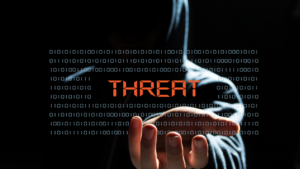Table of Contents
- What is the Threat Hunting Process?
- Key Threat Hunting Characteristics
- Common Threat Hunting Techniques
- Democratizing Threat Hunting
What is the Threat Hunting Process?
Threat hunting is the proactive use of manual or machine-based tactics by a skilled cybersecurity analyst to uncover security events or threats that existing automated detection systems have missed. Analysts must know how to persuade their toolsets to locate the most hazardous threats to be effective at threat hunting. To handle the vast number of data consisting of logs, metadata, and packet capture (PCAP) data, they also need an extensive understanding of various forms of malware, exploits, and network protocols.
Key Threat Hunting Characteristics
Threat hunting isn’t only for big businesses with a lot of money to spend. Rather, any company may implement best practices by focusing on the following fundamental characteristics:
- Being Proactive: Threat hunting demands proactively sniffing out prospective invaders before any alarms are issued, rather than waiting for a warning from an existing security technology.
- Trusting Gut Feelings: The finest danger hunters don’t depend on tools’ definitive alarms or rule-based detections too much. Instead, they search for clues and trust their instincts, then use what they learn to develop automated danger detection procedures.
- Following Traces: Threat hunting is based on the assumption that an organization’s environment has been compromised and that attackers have left traces. It is thus critical to follow all traces and clues to the end, no matter how long or winding the quest may be.
- Embracing Creativity: It’s not about obeying the rules when it comes to threat hunting. Threat hunting necessitates embracing imagination and any appropriate approaches to keep ahead of the most talented and imaginative adversaries (established or not).
Common Threat Hunting Techniques
 To detect dangers in an organization’s environment, four basic threat hunting strategies are used:
To detect dangers in an organization’s environment, four basic threat hunting strategies are used:
- Searching: This entails searching evidence data for specified artifacts using well-stated search criteria, such as complete packet data, flow records, logs, alerts, system events, digital pictures, and memory dumps. Because it’s unusual to know precisely what to look for while searching for threats, it’s critical to strike a balance between not making search parameters too wide and not making them too narrow.
- Clustering: Clustering is extracting clusters of comparable data points based on certain criteria from a larger data set using machine learning and AI technologies. Analysts may use the technique to acquire a broader perspective of data of interest, identify commonalities and/or unrelated connections, and weave those insights together to create a fuller picture of their organization’s network and figure out what’s going on inside their organization’s network what they should do next.
- Grouping: Taking many distinct objects and determining when multiples of them appear together based on specified search parameters is the goal of this approach. While Grouping is similar to Clustering, it only searches an explicit group of objects that have previously been identified as suspicious (whereas Clustering includes searching large volumes of data to identify data sets that need to be investigated further).
- Stack Counting: This approach, also known as stacking, calculates the number of occurrences for values of a certain kind of data and examines the outliers of those findings. Stacking is most effective when data sets yield a limited number of outputs and inputs are appropriately planned. Finding abnormalities in huge data sets requires the ability to organize, filter, and edit the data in question, thus using technology — even something as simple as Excel — is crucial when Stacking.
Democratizing Threat Hunting
Regardless of size or industry, every organization wants to discover every conceivable danger as soon as it appears. That’s why the amount of money spent on automated cybersecurity solutions is increasing so quickly. However, automated systems can only do so much, particularly since new assaults may lack fingerprints for the most critical elements, and not all threats can be detected using standard detection techniques. In reality, data suggests that automated security technologies miss 44 percent of all attacks.
Threat hunting must be prioritized and seen as a continual improvement activity in order to stay up with ever-resourceful and persistent attackers. Investing in technology that allows hunting and follow-on procedures would also benefit these teams. If danger hunting approaches that deliver results are uncovered, make them repeatable and integrate them into current, automated detection procedures. If the same threat hunting procedure continues reappearing and producing results with few false positives, consider automating it.
The efficacy of threat hunting is highly dependent on the amount of analyst skill as well as the breadth and quality of tools accessible to a company. The sort of threat hunting that is possible depends on the organization’s acceptable risk threshold, IT personnel makeup, and security stack. Organizations can guarantee that all analysts, regardless of ability level, can search for and better preserve vital business assets in this way.


